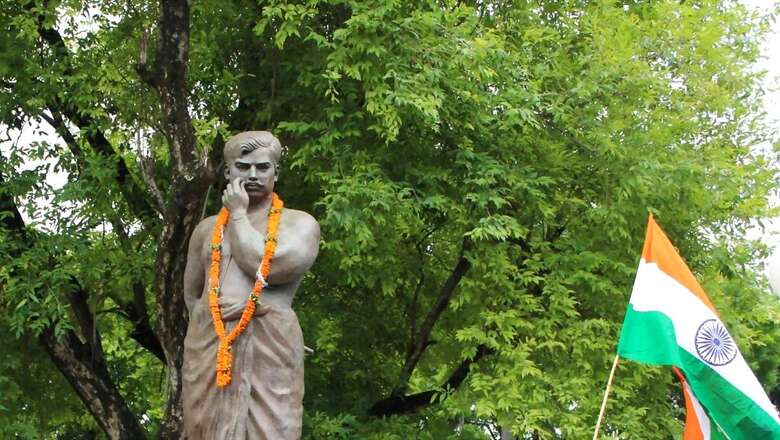
views
“If yet your blood does not rage, then it is water that flows in your veins. For what is the flush of youth, if it is not of service to the motherland?” These powerful words echo the spirit of one of India’s most revered freedom fighters, Chandra Shekhar Azad. His life was a testament to unwavering courage and selfless devotion to the cause of India’s liberation from British colonial rule.
Born Chandra Shekhar Tiwari on July 23, 1906, in the small village of Bhavra in Madhya Pradesh, Azad was a beacon of revolutionary fervour from a very young age. His resolve to fight for India’s independence was ignited early, and by the age of 15, he had already joined the Non-Cooperation Movement initiated by Mahatma Gandhi. This movement marked a pivotal shift in India’s struggle for freedom, and Azad’s participation was a precursor to his later, more radical endeavours.
As he grew older, Chandra Shekhar Azad’s commitment to the cause intensified. In 1920, he became an active member of the Hindustan Republican Association (HRA), an organization dedicated to overthrowing British rule through revolutionary means.
By 1928, he had played a crucial role in transforming the HRA into the Hindustan Socialist Republican Association (HSRA), which aimed to establish a socialist republic in India.
Azad’s leadership and strategic acumen were instrumental in several significant revolutionary activities. He worked closely with other notable revolutionaries, including the legendary Bhagat Singh. Together, they sought to challenge and dismantle the oppressive colonial regime.
Azad gained national prominence following the daring Kakori Train Robbery of 1925, a meticulously planned operation executed by the HSRA to fund their revolutionary activities and draw public attention to their cause. The operation targeted a train carrying British government funds and was a bold statement of defiance against colonial rule.
Chandra Shekhar Azad was known for his unwavering resolve and extraordinary bravery. He lived a life on the run, constantly evading capture by the British police, and became a symbol of resistance for the youth of India. His dedication to the cause was matched only by his commitment to maintaining secrecy and protecting his fellow revolutionaries.
In January 1931, during a fierce encounter with the British police in Alfred Park, Allahabad, Azad fought valiantly but was eventually cornered. Faced with the prospect of capture, Azad chose to end his life on his own terms, declaring that he would never be captured alive. His martyrdom was a profound moment in the Indian independence movement and galvanized countless others to join the struggle for freedom.
Azad’s legacy is remembered not just for his revolutionary activities but also for his profound contributions to the nationalist cause. His life and sacrifices continue to inspire generations of Indians to uphold the values of courage, integrity, and patriotism. On his birth anniversary, we honour not only his role in India’s fight for independence but also his vision for a just and free nation.
CHANDRASHEKHAR AZAD’S INSPIRATIONAL QUOTES
- “A plane is always safe on the ground, but it is not made for that. Always take some meaningful risks in life to achieve great heights.”
- “I believe in a religion that propagates freedom, equality, and brotherhood.”
- “Don’t see others doing better than you, beat your own records every day because success is a fight between you and yourself.”
INTERESTING FACTS ABOUT CHANDRASHEKHAR AZAD
- Azad was sent to Kashi Vidyapeeth in Varanasi because his mother wanted to make him a Sanskrit scholar.
- He came to be known as Chandrashekhar Azad after he announced his name as Azad when presented before the court during the Non-cooperation movement.
- He was an expert marksman and used to practice shooting regularly.
- He was involved in the assassination of the assistant superintendent of police, John Poyantz Saunders in 1928.
- He died by shooting himself in the head. Police came to arrest him at Alfred Park in UP’s Allahabad. He indulged in a shootout and got hit in the right leg. Finding it difficult to escape, he, holding his pledge to always remain Azad (free), shot himself with the last bullet left in his gun.
















Comments
0 comment